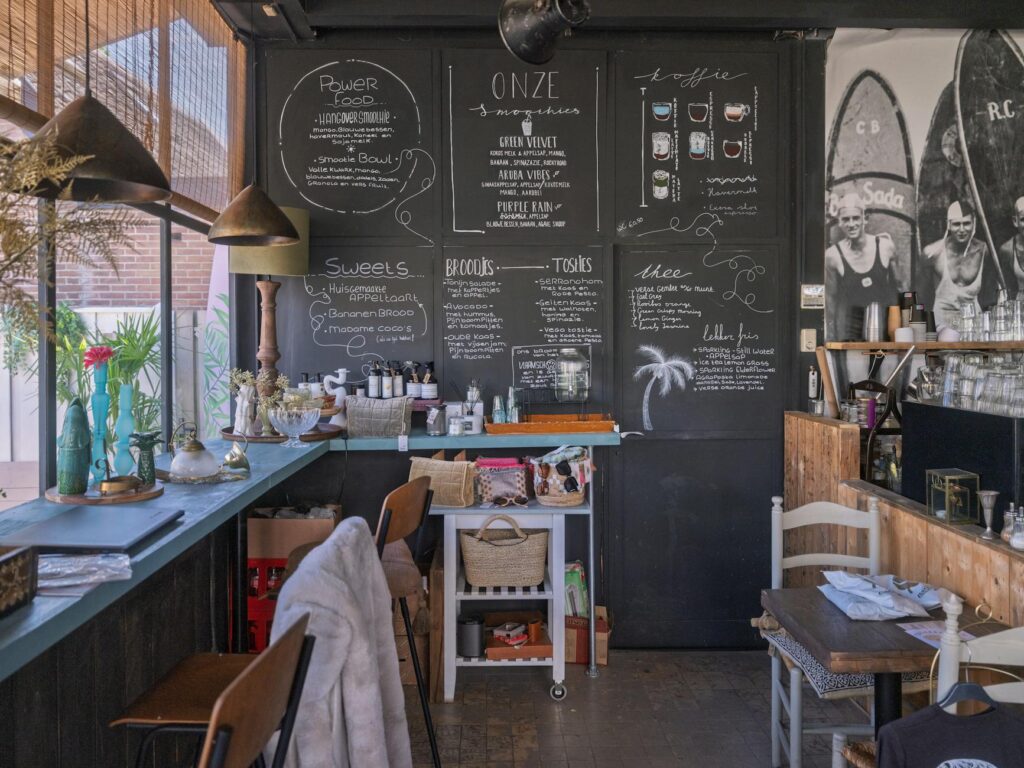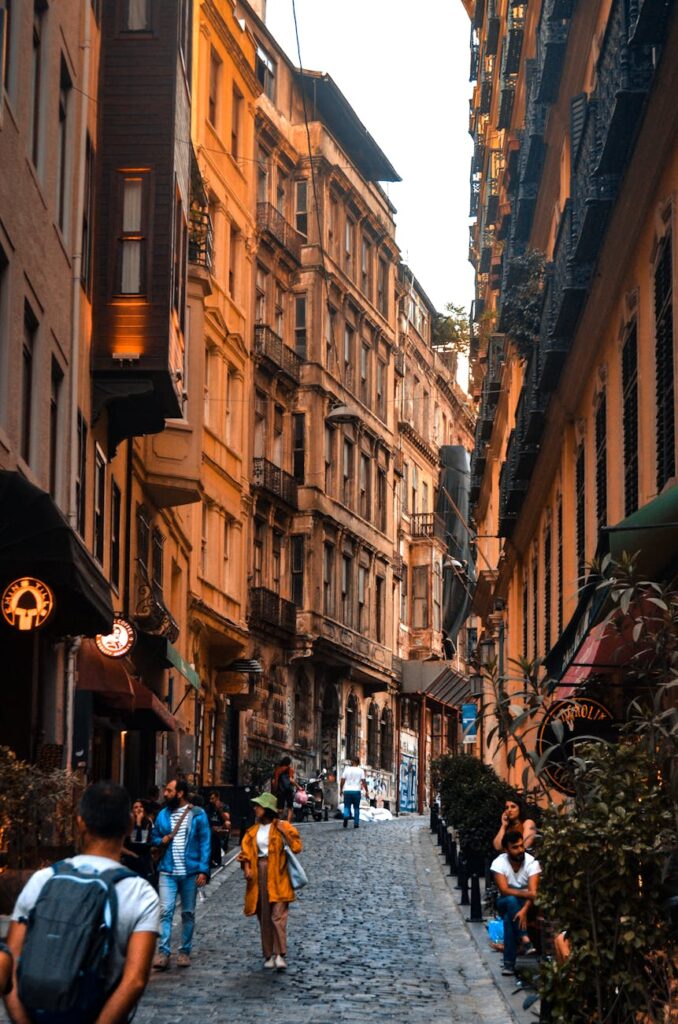The Joy of Rediscovering Your Own City Like a Tourist
You know the feeling. The alarm blares. You navigate the same path to the kitchen, make the same coffee, and take the same route to work. You see the same buildings, the same traffic lights, the same crack in the pavement. Your city, once a place of possibility, has become little more than a backdrop to your routine. It’s the visual equivalent of elevator music—present, but completely ignored. We get so wrapped up in the daily grind that we develop a kind of local blindness, filtering out the very streets we live on. But what if you could break that spell? What if you could feel that spark of discovery you get on vacation, without ever packing a suitcase? The secret is simple, yet profound: it’s the joy of rediscovering your city like a tourist.
This isn’t just about a “staycation” where you binge-watch a new series on the couch. This is an active, intentional shift in perspective. It’s about trading your commuter’s tired gaze for a traveler’s curious eyes. It’s about finding the adventure that’s been hiding in plain sight all along. You’d be absolutely amazed at what you’ve been missing.
Key Takeaways
- Familiarity often leads to ‘local blindness,’ causing us to overlook the unique aspects of our own city.
- Adopting a tourist’s mindset—one of curiosity and intentional exploration—is the key to seeing your home in a new light.
- Simple, practical strategies like walking instead of driving, trying one new place a week, and taking local tours can completely transform your relationship with your hometown.
- Rediscovering your city is a budget-friendly, sustainable way to experience the thrill of travel and build a deeper connection to your community.

Why We Put on Blinders in Our Own Backyard
Ever wonder why a city feels electric when you first visit, but that magic fades once you live there? It’s not the city that changes; it’s you. Our brains are incredibly efficient machines, and to save energy, they create mental shortcuts. This is called habituation. The daily commute, the corner store, the neighborhood park—they become so familiar that our brain stops actively processing them. It says, “Yep, seen this a thousand times, no new information here, moving on.”
This is a survival mechanism. If we paid rapt attention to every single detail on our way to work, we’d be mentally exhausted before we even sat down at our desks. The problem is, this efficiency robs us of wonder. The beautiful architecture of that old bank building? It just becomes “the bank.” The quirky mural on the side of the laundromat? It’s just a blur you pass at 30 miles per hour. We live on autopilot, navigating a mental map of destinations—home, work, grocery store, gym—and a whole world exists in the spaces between that we simply don’t see anymore.
Vacations work because they force our brains off this autopilot. Everything is new. Every street sign, every cafe menu, every local custom demands our attention. We are fully present because we have to be. The good news? You don’t need a plane ticket to trigger this state of mindful awareness. You just need to decide to turn it on.
Shifting Your Mindset: The First and Most Important Step
Before you even think about what to do or where to go, the entire practice of rediscovering your city starts between your ears. It’s a conscious decision to be a traveler, not a resident, for a day. What does that actually mean?
First, it means embracing curiosity. A tourist asks questions. Why is that street named that? What’s the story behind that statue? What’s the most popular dish at this little restaurant I’ve never noticed before? Let yourself be guided by a sense of “I wonder…” instead of a sense of “I know.” Assume you know nothing, even about the neighborhood you’ve lived in for a decade.
Second, it means being intentional. Don’t just wander aimlessly (though that has its own merits!). Plan a little. Block out a Saturday afternoon and declare it your “Tourist Time.” Put it on the calendar. Tell your family. This isn’t just “running errands,” it’s an expedition. By giving the activity weight and importance, you’re telling your brain to pay attention. You’re priming yourself for discovery.
Finally, it means leaving your baggage—both literal and metaphorical—at home. Don’t think about the laundry you need to do or the email you forgot to send. Ditch the cynicism and the jaded “I’ve seen it all” attitude. Approach your city with the open-hearted optimism of a first-time visitor, ready to be impressed. You’re not a local who knows all the shortcuts; you’re an adventurer on a mission to find the scenic route.
Practical Strategies for Rediscovering Your City
Okay, you’ve got the mindset. Now, how do you put it into action? The beauty of this concept is its flexibility. You can go all-in with a full-day itinerary or start with small, 30-minute micro-adventures. Here are some powerful, easy ways to begin your journey.
Ditch the Car, Embrace Your Feet
Your car is an isolation chamber that rockets you past the details of your city. The single best thing you can do to see your home differently is to get out of it. Choose a neighborhood—maybe one you only ever drive through—park the car, and just walk. Walk slowly. Look up at the buildings, not just what’s at eye level. Read the historical plaques. Peek into shop windows. You’ll notice the intricate tilework on a pre-war apartment building, a tiny community garden tucked into an alley, the sound of a musician practicing from an open window. These are the textures of a city, and you can only experience them at a human pace. If walking isn’t your thing, try a bike, a scooter, or even the much-maligned public bus. Taking a bus route from end to end is a fascinating way to see the city’s diverse tapestry unfold.

The “One New Thing a Week” Challenge
This is a simple but transformative habit. The rule is easy: every single week, you must go to one new place or do one new thing. It doesn’t have to be big or expensive. It could be:
- Trying a different coffee shop.
- Visiting a park on the opposite side of town.
- Going to that small, quirky museum you’ve always driven past.
- Eating at a restaurant that serves a cuisine you’ve never tried.
- Walking down a single residential street you’ve never been on before.
This small, consistent effort compounds over time. After a few months, you’ll have a mental map of your city that’s rich with dozens of new experiences, breaking you out of the rut of your three or four usual haunts.
See Through a Different Lens (Literally)
Give yourself a mission. Pretend you’re a photographer for National Geographic, tasked with capturing the soul of your city. You don’t need a fancy camera; your phone is perfect. The goal isn’t to take perfect photos, but to force yourself to look for things worth photographing. Look for interesting patterns, compelling shadows, vibrant colors, and moments of human connection. This simple act of framing your world through a lens makes you an active observer instead of a passive passerby. You’ll start noticing the details—the way the afternoon light hits a particular building, the unique font on an old sign, the character in a stranger’s face. It’s a powerful mindfulness exercise disguised as a fun hobby.
“The real voyage of discovery consists not in seeking new landscapes, but in having new eyes.” – Marcel Proust
Let a Local Guide… Guide You (Even if You’re a Local)
This might sound crazy. Why would you pay for a tour of a city you live in? Because the tour guide’s job is to know the stories you don’t. They’ve done the research. They know the hidden histories, the scandalous secrets, and the best-kept secrets. Taking a specialized tour can completely recontextualize a place you thought you knew.
Consider a food tour of a specific neighborhood, a historical walking tour of downtown, a ghost tour after dark, or even an architectural boat tour. You’ll not only learn fascinating facts, but you’ll also meet other curious people (both tourists and locals!) and likely discover new favorite spots. You’re outsourcing the planning and research and just get to show up and be amazed.
Eat Like a Tourist
Food is a gateway to culture, and it’s one of the best parts of traveling. So, apply that same logic to your hometown. Break out of your restaurant rotation. Explore the ethnic enclaves of your city. Is there a Little Italy? A Koreatown? A neighborhood known for its incredible Vietnamese or Ethiopian food? Go there. Don’t go to the most famous, highly-rated spot. Go to the small, family-run place with the line out the door. Ask the waiter what their favorite dish is and order it. Exploring your city’s culinary landscape is an adventure for your taste buds that can transport you around the world without leaving your zip code.
Planning Your “Hometown Tour”: A Step-by-Step Guide
Ready to get serious? Treat a day of local exploration like a real vacation day. A little planning goes a long way in making it feel special.
- Do Your Research: Spend an hour on the internet, just as you would for a trip to Paris or Tokyo. Google “hidden gems in [Your City]” or “unusual things to do in [Your City].” Look at local blogs, event calendars, and the city’s official tourism website (you’ll be surprised what’s on there).
- Pick a Theme or a Neighborhood: Don’t try to do everything at once. Focus your day. Maybe it’s a “Public Art and Murals” day. Or a “Historic Downtown” day. Or you could just pick one neighborhood and decide to explore every single street in it.
- Set a Loose Itinerary: Have a few key points of interest you want to hit, but leave plenty of room for spontaneity. The plan might be: start at a new cafe, visit that specific bookshop, walk through the nearby park, and end at a brewery you’ve never been to. What happens in between is part of the adventure.
- Pack a Day Bag: This small act makes it feel official. Pack a water bottle, a snack, a portable charger, a notebook, and maybe a real, physical map (a fantastic prop for getting into character!).
- Document Your Journey: Take pictures. Write down your thoughts in a notebook. Make a short video. Creating a record of your day solidifies the memories and turns them into a story you can look back on.

Conclusion
The world is a big, beautiful place, and the desire to travel and see it is a wonderful thing. But adventure isn’t something that only happens when a pilot announces your arrival in a new time zone. It’s a mindset. It’s a choice to be curious, to be present, and to see the magic in the seemingly mundane. Rediscovering your city is more than just a fun way to spend a weekend. It’s a practice that cultivates gratitude for where you live. It deepens your sense of place and community. It saves you money, reduces your carbon footprint, and provides that soul-quenching hit of novelty and discovery you crave—all within a few miles of your own front door. So, this weekend, don’t just live in your city. Explore it. The greatest adventure might just be the one that’s been waiting for you in your own backyard.
FAQ
- What if I live in a very small town or suburb?
- The principles are exactly the same! A smaller area just means you can be more thorough. Explore the history of your town hall. Find out who the oldest business on Main Street is and talk to the owner. Hike every single trail in the local nature preserve. Visit the neighboring town you always drive through but never stop in. The scale is different, but the potential for discovery is just as big.
- How can I do this on a tight budget?
- This is one of the most budget-friendly forms of ‘travel’ there is! Many of the best activities are completely free. Walking is free. Visiting public parks is free. Window shopping is free. Many museums have free admission days. Pack a lunch and have a picnic instead of eating out. The library is a fantastic free resource for local history books and event listings. The goal is to enrich your experience, not empty your wallet.
- How do I get my partner, family, or friends on board if they’re not excited?
- The key is to frame it as a specific, fun activity rather than just “let’s wander around.” Instead of saying “let’s be tourists,” say “let’s go on a mission to find the best tacos in the city” or “let’s do a photo scavenger hunt in the arts district.” Tying the exploration to a shared interest like food, games, or history can be a much easier sell and a great way to connect with your loved ones.



 Kneading Dough Therapy: A Baker’s Travel Guide
Kneading Dough Therapy: A Baker’s Travel Guide  Plan a Relaxing Getaway on Your Daily Commute
Plan a Relaxing Getaway on Your Daily Commute  The Digital Postcard: A Guide to Mindful Photo Sharing
The Digital Postcard: A Guide to Mindful Photo Sharing  Discover Serenity: 7 Peaceful Architectural Styles
Discover Serenity: 7 Peaceful Architectural Styles  Beat Museum Burnout: Enjoy Your Visit Without Exhaustion
Beat Museum Burnout: Enjoy Your Visit Without Exhaustion  A Guide to the World’s Most Beautiful Fountains
A Guide to the World’s Most Beautiful Fountains  Social Media on Blockchain: The Next Digital Frontier
Social Media on Blockchain: The Next Digital Frontier  What is a Flash Loan? A DeFi Deep Dive for Beginners
What is a Flash Loan? A DeFi Deep Dive for Beginners  Crypto Swing vs Day Trading: Which Style Wins?
Crypto Swing vs Day Trading: Which Style Wins?  A Guide to NFT Generative Art Platforms (2024)
A Guide to NFT Generative Art Platforms (2024)  Crypto’s Carbon Footprint: The Real, Nuanced Story
Crypto’s Carbon Footprint: The Real, Nuanced Story  Join a Web3 Community: The Ultimate Networking Guide
Join a Web3 Community: The Ultimate Networking Guide